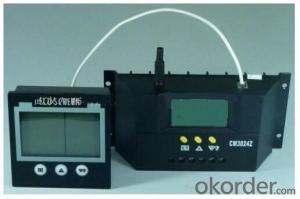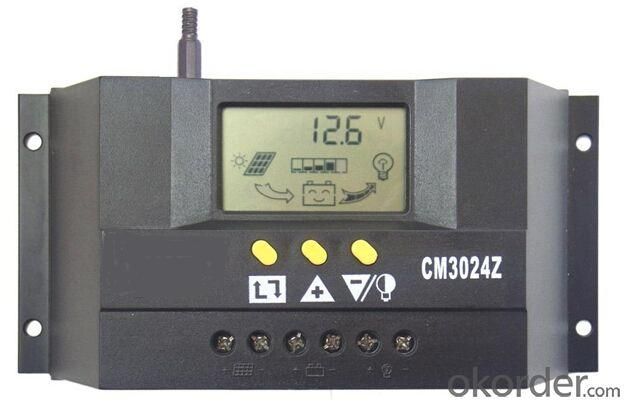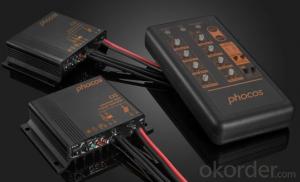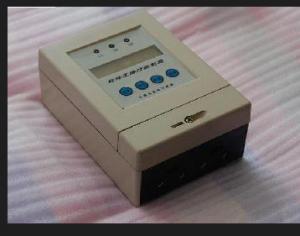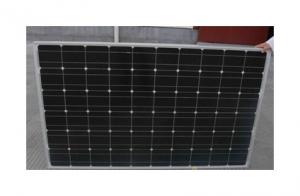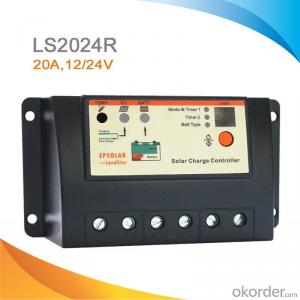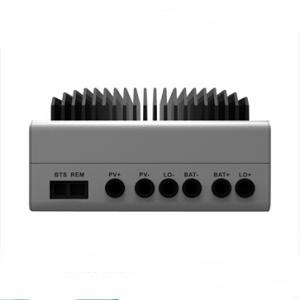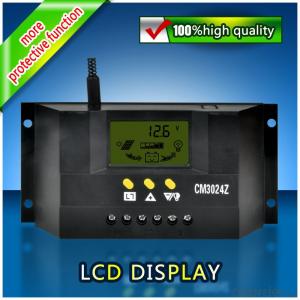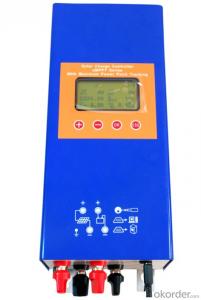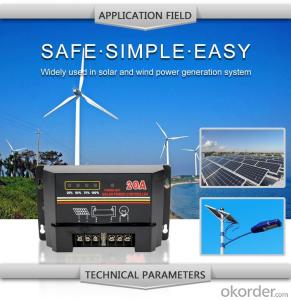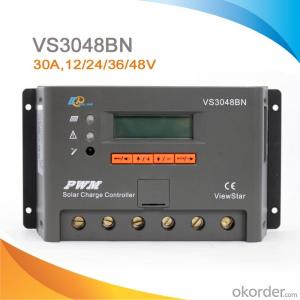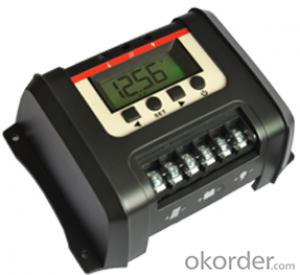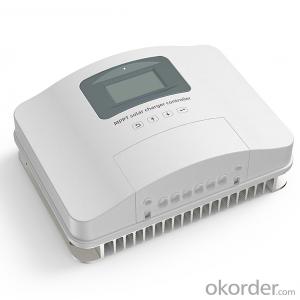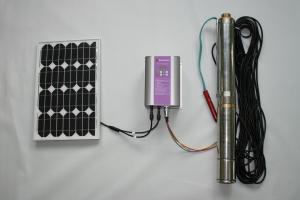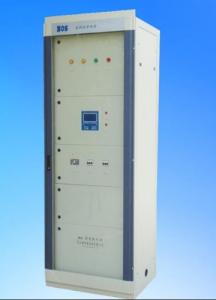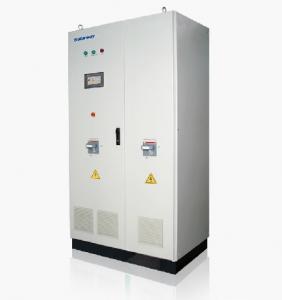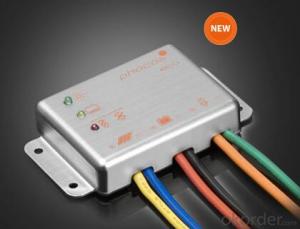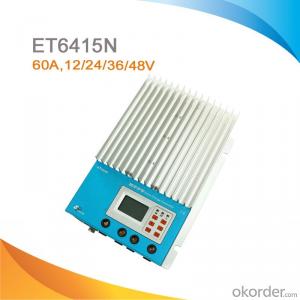Solar Powered Game Controllers with LCD Display Model CM 3024Z for Home Use
- Loading Port:
- Shanghai
- Payment Terms:
- TT OR LC
- Min Order Qty:
- 10 unit
- Supply Capability:
- 500 unit/month
OKorder Service Pledge
OKorder Financial Service
You Might Also Like
1. Structure of Solar Street Light Charging Controller for Home Use with LCD Display Model CM 3024Z
This solar street light charging controller is designed for home use, such as light in the yard. The controller of CM Series is a kind of intelligent and multi-functional solar charging and discharging controller. The products of this series consist of special LCD display which has very convenient operation interface, and all of the controls parameters can be set and adjusted according to different requirement. It is really a good example of solar energy application in daily use for home.
2. Main Features of Solar Street Light Charging Controller
· Vivid graphic symbol on LCD
· ·Easy and explicit operation with button
· ·Automatic identification of system voltage degree
· ·Intelligent charging mode of PWM
· ·Automatic temperature compensation
· ·Available for setting loading work mode
· ·Accumulative function for total Amper-hours during charging and discharging
· ·Reverse polarity protection and undervoltages protection for accumulator
· ·Overload protection and short circuit protection for accumulator
3. Solar Street Light Charging Controller Specification
Model | CM3024Z |
Rated working current | 20A \30A |
Rated working voltage | 12V/24V |
Solar panel voltage | ≤50V |
Floating charge voltage | 13.8V/27.6V |
Undervoltage protection | 10.7V/21.4V |
Undervoltage recovery | 12.5V/25.0V |
No-load loss | ≤30mA |
Circuit voltage drop | ≤170mV |
Charging mode | PWM MODE |
Temperature conpensation | -4mV/Cell/℃ |
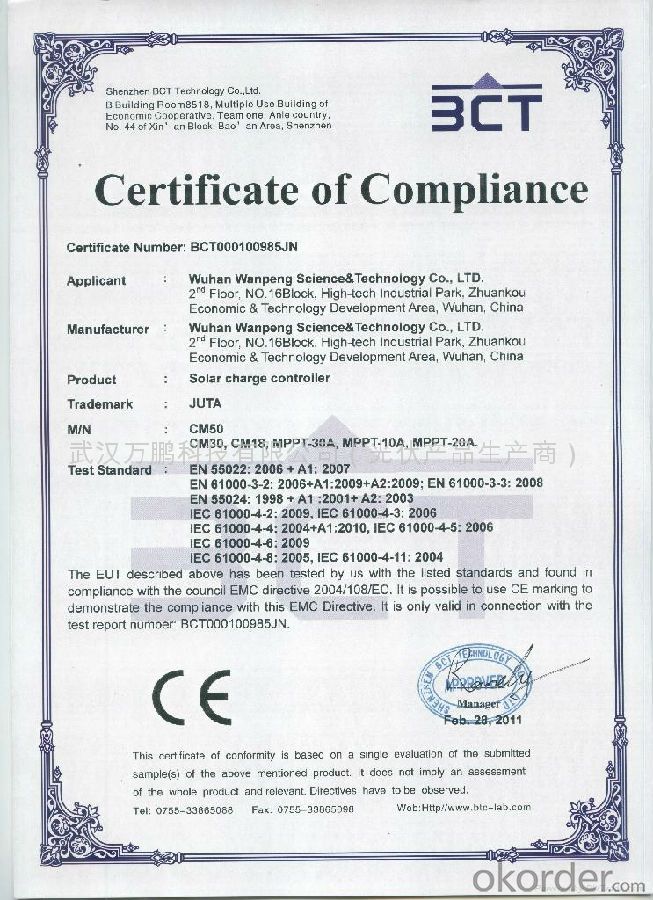
4. Solar Street Light Charging Controller Images
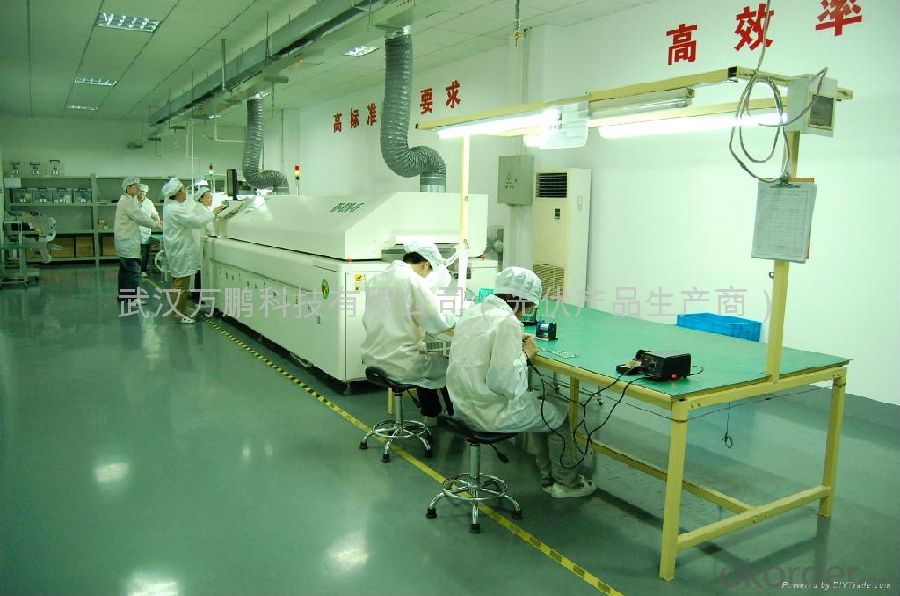
5. FAQ
We have organized several common questions for our clients, which may help you sincerely:
Q1. How to guarantee the quality of the products?
The company presses the ISO9000 quality management system control product quantity strictly, the export production all passes the relevant national company check (CE, ROHS), and get high evaluation of the customer.
Q2. How long can we receive the product after signing Sales Confirmation?
Generally speaking, if there is enough quantity of finished products which can meet the clients’ requirement, we can manage the delivery within three to five working days according to the instruction of the payment terms in the Sales Confirmation; if the products needs some time to get ready, we will arrange the delivery as soon as possible after the manufacture.
- Q: Can a solar controller be used with solar-powered indoor air purification systems?
- Solar-powered indoor air purification systems can indeed utilize a solar controller. This device serves as a regulator, managing the flow of electricity from the solar panels either to a battery or directly to a load. Its primary functions involve promoting efficient battery charging by the solar panels and safeguarding against overcharging or discharging. In the context of solar-powered indoor air purification systems, the solar controller plays a critical role in optimizing solar energy usage. It establishes connections with the solar panels, battery, and air purification system. Monitoring the solar panels' power generation, the solar controller then distributes this power accordingly. It charges the battery during periods of excess sunlight and supplies power to the air purification system whenever necessary. Thanks to the inclusion of a solar controller, solar-powered indoor air purification systems can operate effectively in low sunlight conditions or during times of high demand. This integration offers a reliable and efficient means of harnessing solar energy for air purification, reducing dependence on grid electricity and promoting sustainability. In conclusion, integrating a solar controller into a solar-powered indoor air purification system enhances its overall performance, guarantees efficient solar energy utilization, and contributes to fostering a cleaner and healthier indoor environment.
- Q: How does a solar controller handle voltage drop in the wiring?
- A solar controller handles voltage drop in the wiring by using a technique called PWM (Pulse Width Modulation) regulation. When there is a voltage drop in the wiring between the solar panels and the controller, the controller compensates for it by adjusting the duty cycle of the PWM signal. The solar controller constantly monitors the voltage at the panels and compares it to the desired voltage. If there is a drop in voltage due to wiring resistance, the controller increases the duty cycle of the PWM signal. This means that the controller allows more current to flow through the wiring, compensating for the voltage drop. By adjusting the duty cycle, the controller is able to maintain a constant voltage at the panels, ensuring that the maximum power output is achieved. This is important because voltage drop in the wiring can significantly reduce the efficiency of the solar system, leading to lower power generation. In addition to PWM regulation, some advanced solar controllers also employ MPPT (Maximum Power Point Tracking) technology. MPPT controllers are able to dynamically adjust the voltage and current to achieve the maximum power output from the solar panels. This technology further enhances the controller's ability to handle voltage drop in the wiring and optimize the system's performance.
- Q: Can a solar controller be used with a solar-powered heating system?
- Indeed, a solar-powered heating system can make use of a solar controller. This device, recognized as a charge controller, bears the responsibility of managing and overseeing the electricity's passage from the solar panels to the heating system. Its primary function is to guarantee that the solar panels operate at their utmost efficiency, while preventing any potential overcharging of the batteries or the entire system. Through the utilization of a solar controller, the solar-powered heating system can effectively harness the sun's energy and evenly distribute it among the heating components, thus ensuring optimum performance and maximizing energy conservation.
- Q: What is the installation process for a solar controller?
- The installation process for a solar controller involves a few simple steps. First, you need to determine the optimal location for the controller near the solar panels. Next, you connect the controller to the battery bank, ensuring proper polarity. Then, you connect the solar panels to the controller, again following the correct polarity. Finally, you secure all connections and perform a thorough check to ensure everything is properly connected and functioning.
- Q: Can a solar controller be used with solar-powered indoor cultural facilities?
- Solar-powered indoor cultural facilities can indeed utilize a solar controller. The purpose of a solar controller is to regulate the charging and discharging of batteries within a solar power system. Traditionally, solar power has been associated with outdoor applications such as residential or commercial buildings. However, it can also be effectively employed in indoor cultural facilities such as museums, art galleries, libraries, or exhibition halls that prioritize sustainability and environmental friendliness. Implementing a solar controller in these facilities offers several advantages. Firstly, it ensures that the solar panels efficiently convert sunlight into electricity and effectively charge the batteries. By controlling the energy flow, it prevents overcharging, which can potentially harm the batteries. As a result, a reliable and consistent power supply is guaranteed for the indoor cultural facility. Furthermore, a solar controller aids in monitoring the energy consumption of the facility. It provides real-time data on solar power generation, battery status, and overall energy usage. This valuable information enables facility managers to optimize energy consumption, identify any potential issues, and make well-informed decisions to enhance energy efficiency. Moreover, solar controllers often come equipped with built-in features like load control and timers. This allows facility managers to exercise control over the utilization of solar power within the indoor cultural facility. For instance, lights or climate control systems can be programmed to operate during specific hours or only when necessary. This approach minimizes energy wastage and maximizes the utilization of solar power. In conclusion, there is no doubt that a solar controller can be effectively employed in solar-powered indoor cultural facilities. It facilitates efficient energy conversion, enables energy consumption monitoring, and empowers control over solar power usage. By embracing the use of a solar controller, indoor cultural facilities can become more sustainable, reduce their environmental impact, and simultaneously maintain a reliable power supply.
- Q: How does a solar controller handle battery low voltage recovery?
- A solar controller handles battery low voltage recovery by monitoring the voltage level of the battery bank. When the voltage drops below a certain threshold, typically around 11.5 to 11.8 volts for a 12-volt system, the solar controller initiates a recovery process. During recovery, the solar controller reduces the load on the battery bank by disconnecting or reducing the power to non-essential loads. This helps to prevent further draining of the battery and allows it to recharge more efficiently. Simultaneously, the solar controller activates the solar panels to start charging the battery bank. It regulates the charging process by controlling the amount of current flowing from the panels to the batteries. The controller ensures that the charging current is within safe limits to avoid overcharging and damaging the batteries. As the battery voltage gradually increases, the solar controller continuously monitors the charging process. Once the battery reaches a predefined voltage level, typically between 13.5 to 14.5 volts for a 12-volt system, the controller switches to a float or maintenance charging mode. In this mode, the controller reduces the charging current to a lower level, preventing overcharging while keeping the battery fully charged. In summary, a solar controller handles battery low voltage recovery by reducing the load on the battery, activating the solar panels for charging, and regulating the charging process to restore the battery voltage to a safe and optimal level.
- Q: Can a solar controller be used with solar-powered indoor industrial buildings?
- Yes, a solar controller can be used with solar-powered indoor industrial buildings. A solar controller is designed to regulate the charging and discharging of batteries in a solar power system. It helps ensure that the batteries are charged efficiently and protected from overcharging or deep discharging. Therefore, it can be installed in indoor industrial buildings to manage the solar power system and optimize energy usage, even in an indoor setting.
- Q: Can a solar controller be used in a hybrid solar system?
- Yes, a solar controller can be used in a hybrid solar system. A solar controller, also known as a charge controller, is used to regulate the charging and discharging of batteries in a solar power system. In a hybrid solar system, which combines solar power with another source of energy such as a grid or generator, a solar controller is still necessary to manage the battery charging process. In a hybrid solar system, the solar controller helps optimize the use of solar energy by ensuring that the batteries are charged efficiently from the solar panels. It prevents overcharging, which can damage the batteries, and also prevents deep discharge, which can reduce their lifespan. Additionally, the solar controller can provide additional features such as battery temperature sensing and load control, further enhancing the performance and longevity of the battery bank. By using a solar controller in a hybrid solar system, you can effectively integrate and manage different sources of energy, allowing you to maximize the use of solar power while still having the flexibility to switch to alternative sources when needed. This ensures that your hybrid solar system operates efficiently, effectively utilizing the available resources and providing you with a reliable and sustainable power supply.
- Q: How does a solar controller protect against reverse current flow?
- A solar controller protects against reverse current flow by utilizing a blocking diode or a solid-state relay. These components ensure that the current flows in one direction from the solar panels to the batteries, preventing any backflow that could damage the solar panels or the controller.
- Q: What is the maximum power capacity of a solar controller?
- The maximum power capacity of a solar controller typically varies depending on the specific model and brand. However, most standard solar controllers have a power capacity ranging from 10 to 60 amps. It is important to consider the power requirements of your solar system and choose a solar controller that can handle the maximum power output of your solar panels.
Send your message to us
Solar Powered Game Controllers with LCD Display Model CM 3024Z for Home Use
- Loading Port:
- Shanghai
- Payment Terms:
- TT OR LC
- Min Order Qty:
- 10 unit
- Supply Capability:
- 500 unit/month
OKorder Service Pledge
OKorder Financial Service
Similar products
Hot products
Hot Searches
Related keywords
